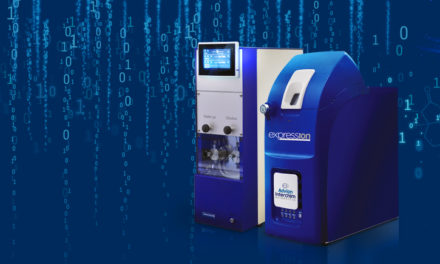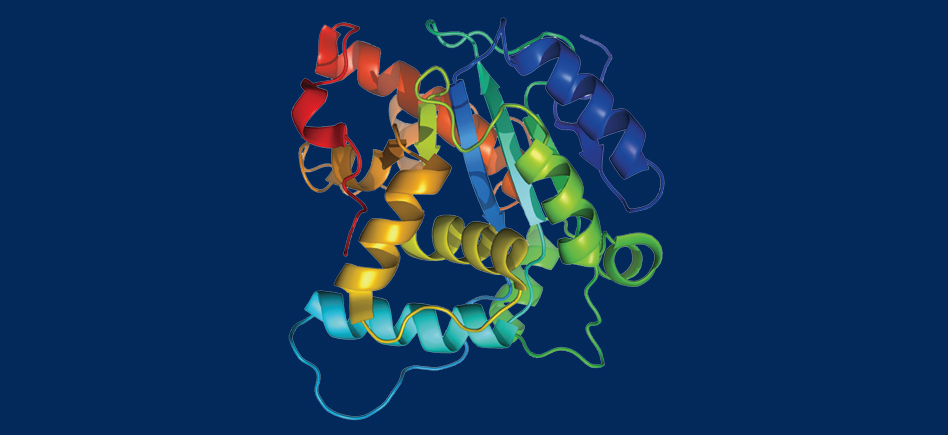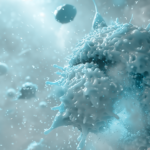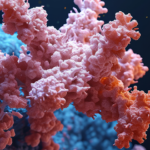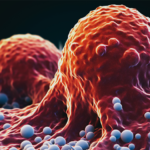1. Direct Sample Analysis ASAP / APCI:
The ASAP source requires no sample preparation, no chromatography and provides fast and accurate analysis of a wide range of compounds in less than 30 seconds.
Ergonomically designed for optimal efficiency, the APCI/ASAP source includes a handle with push button for quickly inserting and releasing a glass capillary.
In the examples below, the ASAP source is directly in contact with clothing (1) and skin (2) to detect the presence of cannabinoids. It is then simply inserted into the CMS expression mass spectrometer to obtain an instant result:

The mass spectra below show the results in positive ionization mode (upper part) and negative mode (lower part). The peaks at m/z 311.2/309.1 and m/z 315.2/313.2 correspond to the (M+H+) and (M-H+) of the cannabinoid (CBN) and THC/CBD respectively. The peak observed at m/z 357.2 corresponds to THC-acid/CBD-acid.
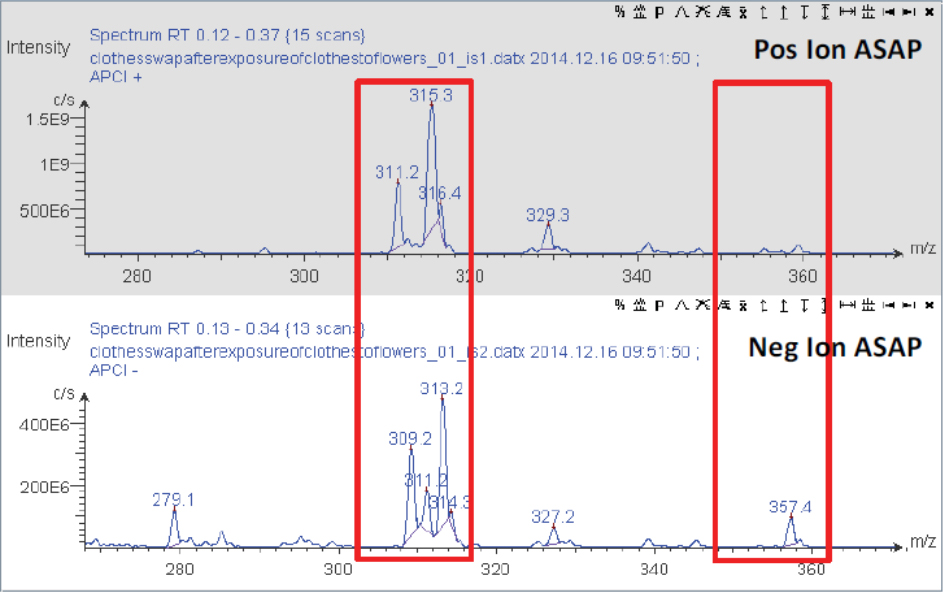 (1)
(1)
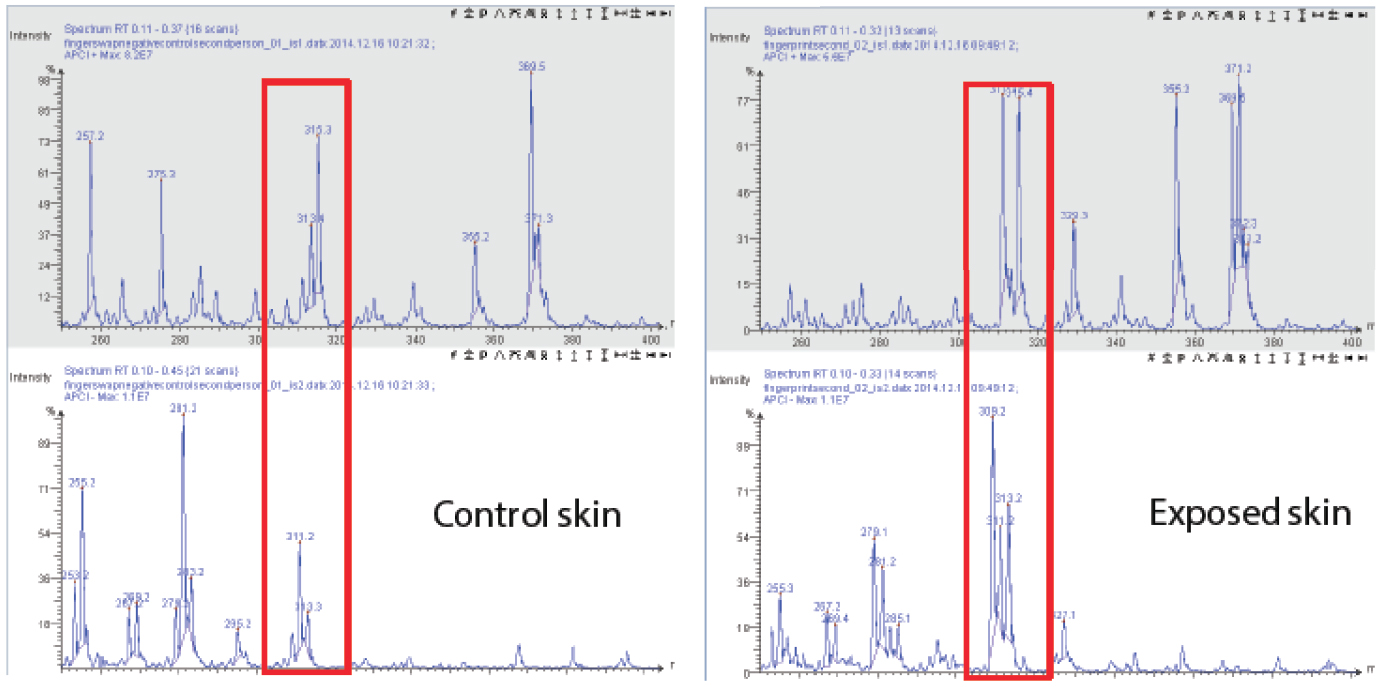 (2)
(2)
2. Rapid Detection of Cannabinoids with the Plate Express TLC Plate Reader:

The Plate Express TLC plate reader can provide push-button analysis of a TLC plate, extract the compounds present and transport to the expression CMS for rapid analysis.
A typical TLC/CMS analysis of THC is shown in A, B. Despite a different molecular structure, both THC and CBD have not only the same isotopic mass, but also fragment identically in positive ion mode ESI/CMS, which makes it difficult to distinguish between them. However, in negative ion mode, in-source CID results in the same m/z fragments, but at significantly different relative intensities which allows a distinction between them, shown in D.
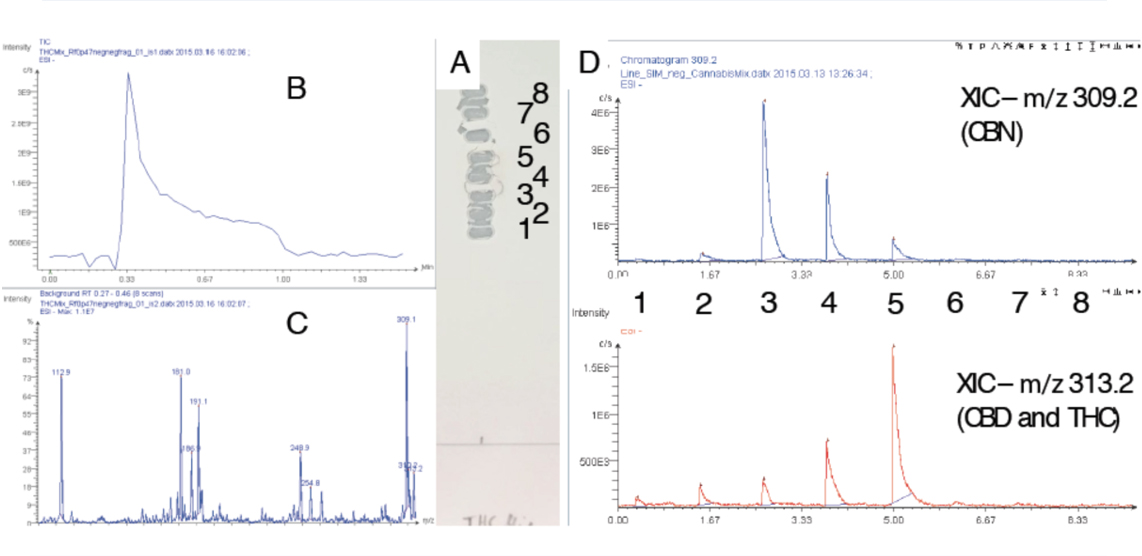
Figure: TLC/CMS analysis of cannabinoids. TLC/CMS analysis of the Rf region of THC (Rf=0.47) shows a strong MS TIC signal (B) with a prominent negative ion signal at m/z 313.2 (data not shown) and the fragments of THC (C).
Conclusion:
The compact expression CMS Advion mass spectrometers have been developed to offer maximum versatility. They allow users to quickly switch between the many different sample introduction techniques. From simple direct injection analysis, to automatic analysis of TLC plates, to coupling to HPLC and purification systems.
To know more about it:
- Find our demonstration videos on our Youtube channel.
- Consult our product data sheets:
– Advion ASAP
– Advion Plate Express - Request for technical information or a personalized offer

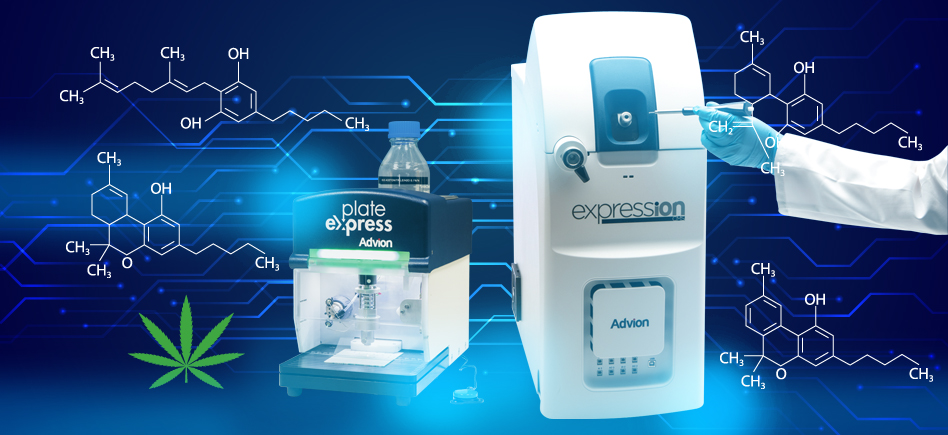

 (2)
(2)